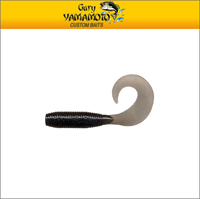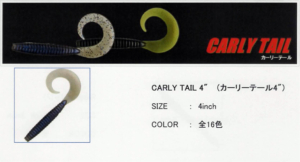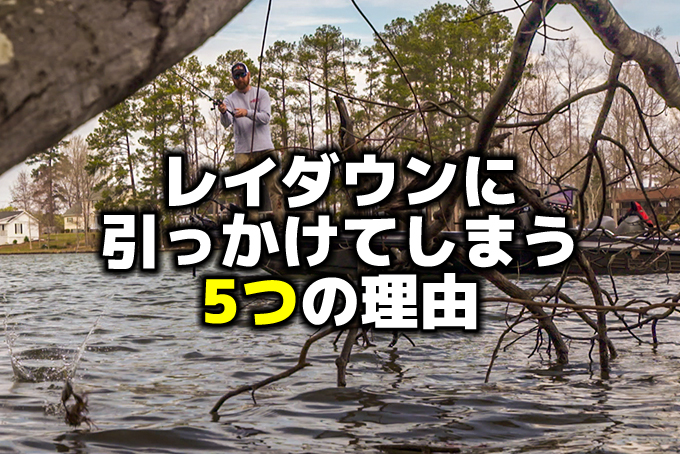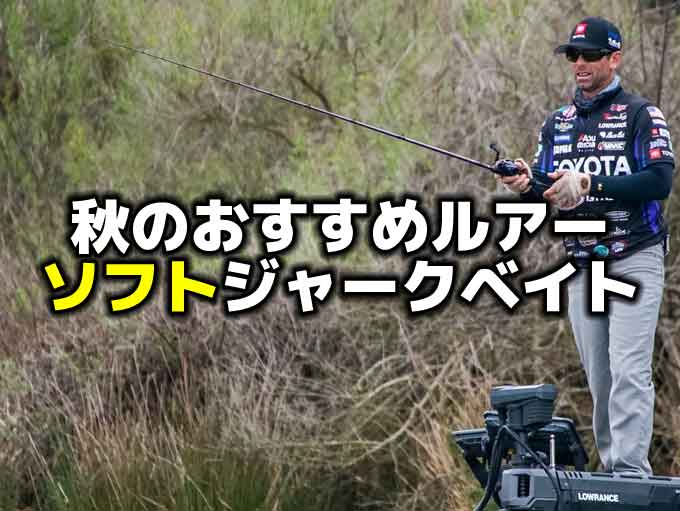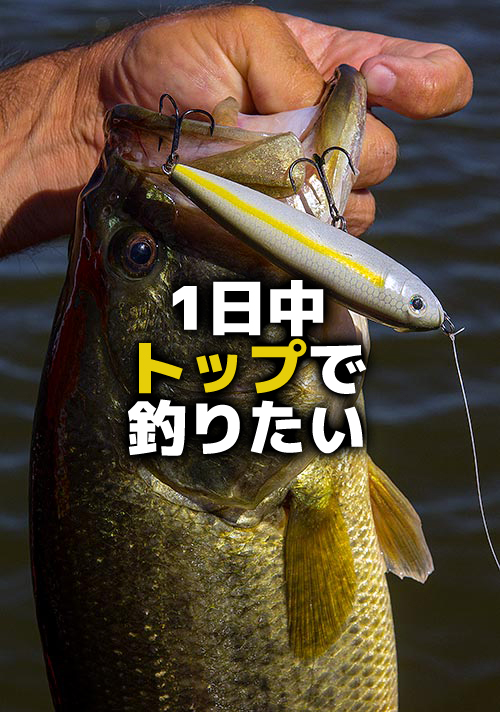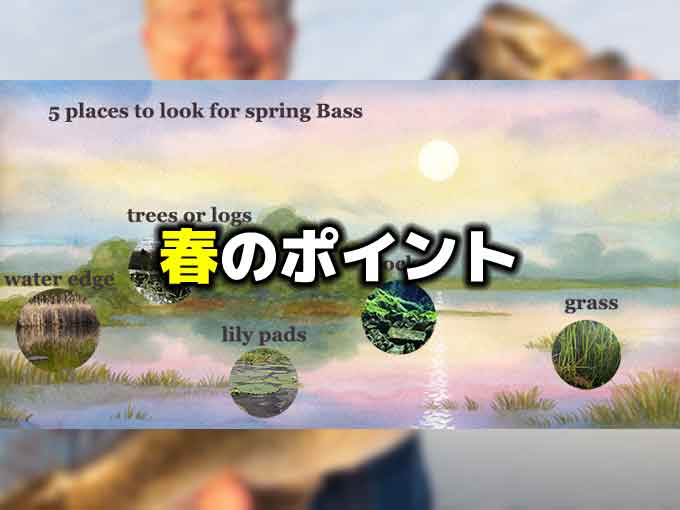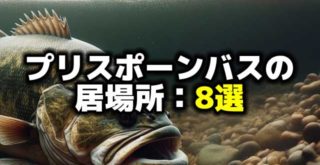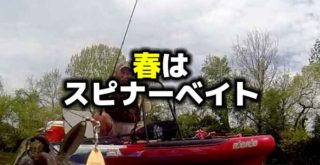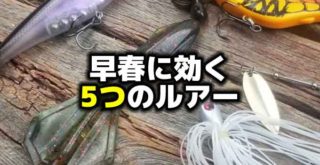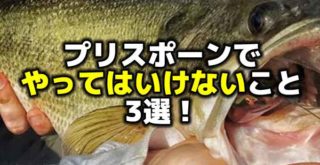冬のグラブの使い方

Photo by scout.com
こんにちは!店長の小山です!
本日は海外サイトより、”How to Fish Grubs for Winter Bass”という記事を引用してご紹介いたします。
引用先:scout.com”How to Fish Grubs for Winter Bass”By Walker Smith – Dec 7, 2014(海外サイトです)
グラブというルアーを、みなさんはどうお使いでしょうか。
現代のバス釣り業界は、日々進歩しており、毎年毎年、多くの新作ルアーが各メーカーより発売されます。私たちは新しいルアー、新しいテクニックが出てくることを心待ちにしていますし、それが手に入ればやはり使ってみたくなるというのが人の常というものですよ…ね。
そんな時代ですから、古くからあるものは時に忘れがちになることがあります。
グラブというルアーもそのひとつではないでしょうか。
野尻湖のバス釣りが解禁した1995年当時から2000年ごろにかけて、グラブは誰もが使う必殺ルアーでした。しかし今では、グラブを投げているアングラーの姿を昔ほど見かけることはなくなってしまっています。
新しいルアーが釣果をもたらしてくれるということに疑いの余地はありません。しかし、現代において新しいルアーを追いかけるということは、それだけで年間数万円から数十万円を使うということになります。それだけの金額を使うのであれば、少しくらいは古くから数々のアングラーを優勝に導いてきたルアーにも目を向けることも悪くないのではないかと思います。
この記事は、アメリカバスマスター・エリートプロのマーク・メネンデス氏が、アメリカのフィッシングメディア「Wired2Fish」で、冬のグラブの有効性を解説してくれています。彼が言うには、冬のグラブはバスを釣るのに有効な事以上に、アングラーのスキルレベルにかかわらず結果を出すことができるルアーだと言っています。
冬はイージーな季節ではありませんが、正しい使い方をすることによって冬でも結果を出すことになるということであれば、ぜひ理解してみたいところですよね。
それでは読んでいきましょう。
ベイトフィッシュとバーチカリティ
Grubs may be named for their uncanny resemblence to the larva of several insects, but don’t let that fool you. When rigged on a weighted jighead, they closely mimic the natural swimming action of a coldwater baitfish.
“These baits have a very similar vibration in the water as a shad does,” Menendez said. “Shad ‘shimmy’ as they move through the water and as the temperatures drop into the 40 to 50-degree range, that narrow swimming action becomes even less pronounced. Remember, bass are largely sight-oriented feeders in cold water, so a natural, non-imposing action is hugely important right now.”
Because they offer such a natural, shad-like profile and vibration, Menendez makes an effort to target bass that are primarily feeding on—you guessed it—shad. This narrowed focus allows him to drastically decrease his search efforts and take advantage of very specific areas.
“With the bass coming into their wintertime patterns, we know two very important things,” Menendez said. “This tells us the majority of the activity will be located towards the mouth of every major creek or in the main lake. By identifying the most high-percentage areas of your fishery, you can cut down the chase and totally eliminate dead water.”
More specifically, he looks for vertical banks in these areas. As the bass’ metabolism slows with the decreasing water temperatures, they’re not likely to swim several hundred yards for a quick bite to eat. This verticality, however, offers quick access to both shallow and deep water with very little energy exertion.
- Bluff walls— “These bluff walls are a staple throughout the winter months,” Menendez said. “The bass can easily move up and down the water column to feed and they’ll get absolutely stacked on the small shelves, or flat spots, that protrude from the wall. Bluffs are also indicative of adjacent deep water, which is a big factor whenever you’re discussing wintertime fishing.”
- Points with a vertical drop—For the same reasons bluff walls are so productive this time of year, Menendez targets primary points adorned with one or more sharp, vertical drops. They can be especially effective during winter drawdowns when an increase in current occurs. In these situations, bass will flock to shoreline structure—not cover—and use the eddies as a strategic ambush point for feeding opportunities.
- Marinas— “If you can find a marina situated towards the main lake, you’ve found an excellent spot for grub fishing,” Menendez said. “A lot of these bass will be deep, so don’t bypass a marina if it’s in 50 feet of water. They’ll position underneath the boat docks and near the dock cables and become very predictable and easy to catch.”
グラブは昆虫の幼虫に似ている見た目から名付けられたのかもしれませんが、決して幼虫の動きを意識するものではありません。ジグヘッドに装備したとき、それは冷たい水中のベイトフィッシュの自然なスイミングアクションをうまく模すものです。
「このワームは、水中のシャッド(ベイトフィッシュ)と動きが非常に似ています。 実際のシャッド(ベイトフィッシュ)は身体を揺らすことで水中を移動しますが、水温が4℃から10℃になるとその揺れ幅は顕著に狭くなります。バスは冷たい水の中ではフィーディングを視覚に頼っていることが多いことを忘れないでください。そのため、非常にナチュラルなアクションがこの時期はとても重要なのです。」
このようなシャッドの自然なプロファイルとバイブレーションを提供するため、メネンデスは主にフィーディングしているバスをターゲットにしようと努力しています。このようにターゲットを絞っていくことは、サーチする労力を大幅に減らし、非常に特定のエリアのみを利用することを可能にします。
「バスが冬のパターンに入ると、私たちは非常に重要な2つのことを理解しなければなりません。 それは、活動の大半がメインリバーの入り口、またはメインレイクに位置するということです。そのフィールドの最も確率の高いエリアを特定することによって、移動回数を減らし、無駄なエリアを完全に切り捨てていくことができます。
具体的には、彼はそのフィールドの垂直なバンクを探します。バスの代謝は水温の低下に伴って低下するため、速く食べようと数百メートルも泳ぐことはありません。しかし、このバーチカリティ(垂直性)は、水深の浅いところと深いところの両方に迅速にアクセスでき、エネルギーをほとんど消費しません。
垂直岩盤 – 「壁のような崖は冬の間の定番エリアです。 バスは水中のレンジを容易に上下に移動することができ、壁から突き出た小さな棚やフラットスポットにかなりの割合で待機しています。垂直岩盤は近くにディープがあることを示すものでもあり、冬の釣りの作戦を立てる上で大きな要因になります。」
垂直に近い角度の岬 – この時期の垂直岩盤が非常に有効であるのと同じ理由で、メネンデスは鋭く垂直に落ちる主要な岬をターゲットにしています。それらは、冬の大規模な減水による流れの増加が起こることで特に効果的になります。このような状況では、バスは岸沿いの地形変化につき、フィーディングのチャンスを得るための戦略的な待ち伏せポイントとして、流れによってできる渦(流れが岬に当たってできる流のヨレ、反転流)を利用します。
マリーナ – 「メインレイクに面したマリーナを見つけることができれば、グラブの釣りのための優れたスポットを見つけたことになります。 バスの多くは深くにいたいので、15メートルも水深のあるマリーナを見過ごすことはありません。バスはボートドックの下とドックケーブルの近くに隠れているため、非常に予測可能でキャッチしやすくなります。」
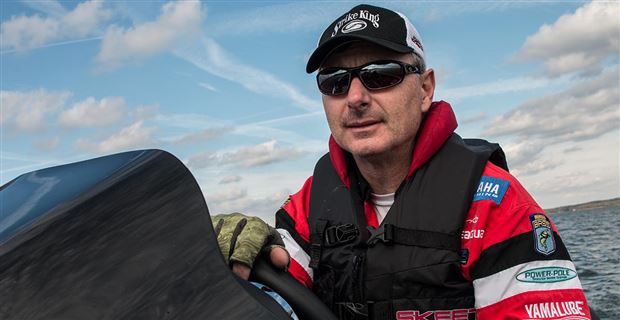
Photo by scout.com
グラブやジグヘッドのサイズ
Specific depth zones can be paramount when you’re fishing a grub in the winter. Paying close attention to the depth at which your bites occur can make coldwater bass quite simple to pattern. If you catch them in 20 feet of water on one spot, they’ll likely be found at the same depth range throughout the majority of the fishery.
“These bass will be positioned at very specific depths and they’re not going to chase a bait like they would in the warmer months, so it’s important to put it right in front of them as often as possible,” Menendez said. “You’ll need to make a long cast and count it down before beginning your retrieve. It will take some experimentation, but make sure to count with each cast. Soon you’ll notice the majority of your bites occuring at a certain depth.”
In order to adjust your grub’s fall rate and ability to remain in the most productive strike zones, Menendez suggests the following system.
- Grub— “I really like the 4-inch Strike King Rage Tail Grub because I’m able to manipulate the bait according to the conditions,” Menendez said. “If it’s lowlight conditions, I’ll leave the its tail flange on to increase its vibration. In partly cloudy conditions, I remove the entire flange except for the tip and if it’s tough bluebird conditions, I’ll remove the entire flange to create a more subtle profile.”
- 3/16-ounce jighead—Whenever he’s faced with ultra-clear water and light wind, Menendez prefers a 3/16-ounce Strike King Tour Grade Shakey Head jighead for his grub fishing. It facilitates a very slow, subtle fall which can be deadly in tough conditions. Remember, wintertime bass feed by sight, so it’s important to maintain a very subtle profile in high-visibility situations.
- 1/4-ounce jighead—Menendez uses a 1/4-ounce jighead most often because of its versatility. With very little effort, he’s able to fish target depths from 3 to 30 feet and cover water efficiently.
- 3/8-ounce jighead— It’s rare to see him using a 3/8-ounce jighead but there have been times in which it has paid big dividends for Menendez. When the brutal winter weather fronts bring gusty winds and frigid conditions, he’ll utilize this heavy jighead in order to keep contact with the grub throughout his entire retrieve.
- 1/8-ounce jighead—“If the bite gets brutally tough and I’m on a lake with lots of spotted and smallmouth bass, I’ll drop down to a 2-inch Strike King Rage Tail Crappie Grub and a 1/8-ounce jighead,” Menendez said. “You can’t believe how many bass you can catch with this setup. It amazed me the first time I tried it.”
レンジを特定することは、冬にグラブでバスを釣ろうとするときに最も重要になります。バイトしてくるレンジに細心の注意を払うことで、冷たい水のバスフィッシングは非常にシンプルになります。 1つのスポットで水深6メートルレンジでバスを発見できたとしたら、おそらくそのフィールドの大半を同じレンジで見つけることができるでしょう。
「これらのバスは非常に特定の深さにいて、暖かいときのように餌を追いかけることはないので、できるだけそのレンジを通すことが重要です。 ロングキャストをして、リトリーブを開始する前にカウントダウンする必要があります。毎キャストでカウントダウンする事を試すことで、バイトの大部分が特定のレンジで起こっていることに気付くことができるでしょう。」
グラブの沈下率と最も有効なストライクゾーンに留まる能力を調整するため、メネンデスは以下のシステムを提案しています。
- グラブ– 「条件に応じてルアーを操作しやすいという意味で、ストライクキング・レイジテールグラブ4インチがお気に入りです。 ローライトの状態であれば、バイブレーションを増幅させるテールフランジは全部ついたままです。部分的に曇りの状態では、先端だけ残してフランジを取り除き、どピーカン状態であれば、フランジ部分を全て除去してよりフィネスなアクションをり出します。

- 3/16オンスのジグヘッド – 超クリアウォーターで軽く風が吹いているようなとき、メネンデスは3/16オンスのストライクキング・ツアーグレードシェイキーヘッドジグヘッドをグラブの釣りに好んで使います。それは、非常に遅く繊細なフォールを容易にし、タフな条件で効果的となる可能性があります。冬期のバスは視力によってフィーディングするので、視認性の高い状況では非常に繊細なアプローチをすることが重要です。
- 1/4オンスのジグヘッド – メネンデスはバーサタイルに使うときは1/4オンスのジグヘッドを使用します。わずかな労力で、ターゲットとするレンジを1メートルから9メートルまで使いこなすことができ、エリアを効率的にカバーすることができます。
- 3/8オンスのジグヘッド – 3/8オンスのジグヘッドを使用するのは稀ですが、メネンデスにとって大きな報酬を得たことがあります。過酷な冬の気圧配置により天気が吹き荒れたときには、この重いジグヘッドを利用して、すべてのリトリーブ時にグラブの感触を保ち続けます。
- 1/8オンスのジグヘッド – 「バイトが情け容赦なく無になったり、またスポッテッドバスやスモールマウスバスいる湖にいるとき、ストライクキング・レイジテールクラッピーグラブの2インチと1/8オンスのジグヘッドに落とします。 このセッティングでどれくらいのバスをキャッチしたかは信じられないほどです。初めて試してみたときには驚きました。」
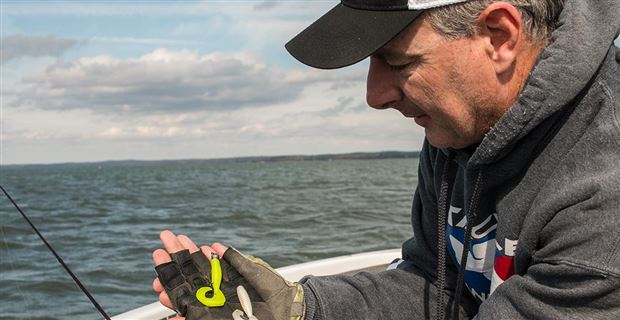
Photo by scout.com
釣り方
To be quite honest, wintertime grub fishing isn’t very exciting. It’s often referred to as a “do nothing” technique but that doesn’t mean it won’t do some serious damage on big bass.
“Grubs are like the last kid on the block picked for a kickball game. They’re not flashy, they don’t have much action and they don’t feel like much on the end of your line. But every now and then that ‘kid’ surprises you by making an awesome play and becomes a hero.”
Once you gain a solid understanding of likely wintertime bass areas and the myriad of jighead selections, fishing grubs is the easy part. Regardless of your experience or skill level, it won’t take long to master the technique.
“Following a long cast and a predetermined countdown, keep your rod at a 45-degree angle and crank slowly,” Menendez said. “The bass won’t want it hopping and jumping around, so all you need to do is maintain a steady and deliberate retrieve. That’s honestly all there is to it.”
Because this is such a subtle finesse technique, it’s essential to use the proper equipment. In order to maximize his sensitivity and castability, Menendez uses a spinning rod and light tackle 100 percent of the time.
“I prefer a 7-foot, medium-heavy Lew’s Custom Speed Stick Spinning Rod paired with a 2000 series Lew’s Team Gold Carbon Spinning Reel,” Menendez said. “And my line selection changes a bit depending upon the conditions. I’ll use 6 or 8-pound Seaguar InvizX most of the time but when it gets incredibly cold out there, I actually use 6 or 8-pound Seaguar Senshi monofilament for better handling.”
実は正直なところ、冬のグラブの釣りはそれほどエキサイティングなものではありませんし、よく「何もしないテクニック」と呼ばれますが、それはビッグバスには効果がないという意味ではありません。
「グラブは、子供のサッカーの試合でいうところのキーパーに選ばれた子供のようなものです。決して派手ではなく、動きもあまりなく、ラインの先にグラブが着いているのかどうかもよく感じ取れません。しかし、時にその「子供」はすばらしいプレーをしてあなたを驚かせ、ヒーローになるのです。」
一度、冬期のバスのいるエリアや数あるジグヘッドの中から正しい選択ができてしまえば、グラブの釣りは簡単なものです。あなたの経験やスキルレベルにかかわらず、テクニックを習得するのに時間はかかりません。
「ロングキャストと必要に応じたのカウントダウンの後、ロッドを45度の角度に保ち、ゆっくりと巻き取ります。 バスはホッピングしたりジャンプしたりするのを望んでいないので、あなたがしなければならないのは、安定して慎重にリトリーブすることです。正直、これがすべてです。」
これは繊細なフィネステクニックなので、適切なタックルを使用することが不可欠です。感度とキャスト精度を最大にするために、メネンデススはスピニングタックルを100%使用します。
「私は、7フィートのミディアムヘビーのスピニングロッド、スピニング2000番と組み合わせることが好きです。 ライン選択は条件に応じて少し変わります。6ポンドまたは8ポンドのフロロラインを使用しますが、非常に寒い日には、扱いやすい6から8ポンドのナイロンラインを使用しています。」
バイトの出方とフッキング
It doesn’t really matter what technique you’re using— you can’t always expect red-hot bass fishing action throughout the winter months. When your hands are frozen and you haven’t had a bite for a while, it’s tempting go into “zombie mode” and release your frustration on the hookset.
Both are a major no-no.
- Learn the bite— “Grub bites are very, very soft,” Menendez said. “So it’s critical to watch your line at all times—don’t start daydreaming or wandering off into space. You might feel a very small ‘tick’, but most often you’ll notice a small twitch in your line or a slightly mushy feeling. Big bass can often bite the lightest, so don’t downplay these small bites. It could very well be a giant.”
- Take it easy on the hookset— There’s no need to come off the floor when setting the hook with a grub. Monstrous “snap” hooksets can put too much stress on small-diameter line and cause a major heartbreak, so Menendez avoids them at all costs. For a better hookup ratio, he slightly speeds his retrieve speed and gently leans back when the rod begins to load.
どんなテクニックを使っているかは実は重要ではありません。冬、あなたはアツいバスフィッシングへの期待ができなくなる…。手が凍えてしまいさらにバイトもない…、こんなとき “ゾンビモード"に入ってしまい、フッキングしたいという欲求不満までどこかへ行ってしまいます。
どちらもあってはならないことです。
- バイトの出方を学ぶ – 「グラブへのバイトは非常にソフトなのです。ですので、いつもラインを見ていることが重要です。空想に夢中になったり、宇宙に迷い込んだりしないでください。もしかしたら非常に小さく「コツン」と感じるかもしれませんが、ほとんどの場合、ラインが小さく揺れるか、わずかにムニュッと感じる程度です。大きなバスでさえ大抵が軽く噛むだけなので、この小さなバイトを軽く見ないでください。それはうまくすれば非常にデカいバスなのかもしれません。」
- 落ち着いたフッキングを – グラブでフッキングをするときは床から振り上げる必要はありません。大きなフッキングモーションは、細いラインにあまりにも多くのストレスをかけることになり、重大なミスを引き起こすので、メネンデスはそれだけは回避します。よりフッキング率を上げるために、リトリーブスピードを少し加速し、ロッドを静かに戻して穏やかに後ろに反り返します。
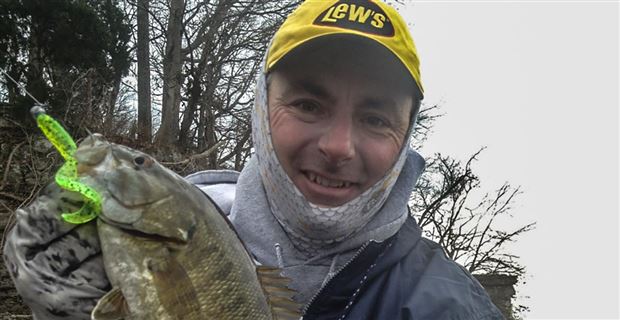
Photo by scout.com
いかがでしたか。
グラブは割と波動が出るタイプのワームだとは思いますが、その波動を感じ取るというのはなかなか難しいですよね、しかもジグヘッドリグにしたらなおさらですかね。いわゆる「ノー感じ」な釣りに近いですから…。
本文中には経験の差に関わらず釣れると書かれていますが、読んでみた感じでは、レンジ調整、バイトがあったレンジでの再現、安定したリトリーブなど、実際はまあまあレベルの高いことを要求しているのではないでしょうか(笑)
もし、あまり経験のない方でしたら、これをいきなり冬にやるのではなく、ある程度釣れる時期にグラブのただ巻きで釣る練習をしておいた方がいいような気がします。こういうノー感じな釣りは、一度釣ってしまうと苦ではないのですが、釣れないとどうしても信用できなくなってやれなくなってしまいますもんね。
逆に、ベテランアングラーさんの中には、「そうかグラブね、たしかにいいかも」と思われる方もいらっしゃるのではないでしょうか。記事に書かれてたようなポイントにアテのある方なら特に、ですね。
冒頭でも書いたように、ルアーは毎年かなりの量が発売され、アングラーの選択肢も膨大になりました。いくらインターネットが発達しSNSなどを盛んに活用しても、これだけ分母が大きくなると、どれが釣れるルアーかを見極めるのには判断が難しいのではないかと思います。
忘れてはならないのは、誰もSNSにアップしていないからといって、それが釣れないルアーとは限らないということだと思います。
ここであえてのジグヘッドグラブ、いかがでしょうか。当店ではゲーリーヤマモト4インチグラブ、サワムラ4インチカーリーテールがオススメです!
私のおすすめは#128スモークブラウンというカラーと#391モエビ、#986ワカサギです!ぜひお試しください。
サワムラカーリーテールは中空ボディのグラブでフックのセッティングが超簡単で超綺麗にできるのでおすすめです!カラーもいい色ばかり!
グラブは記事内のメネンデスさんもやっているようですが、気軽にチューンできるのも良いですよね。例えばテールをカットしてみたり、縦に裂いてみたり、切り込みを入れてみたり。自分なりのチューンで使うのも、使い続けるモチベーションになりますよね。
ぜひ、お試しください。
それでは、また。
毎度ありがとうございます!





